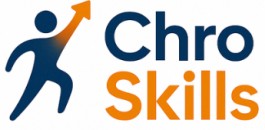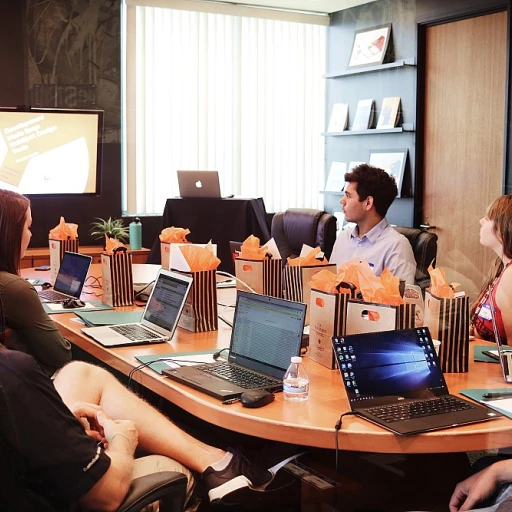
Understanding the Role of a Chief Human Resources Officer
Recognizing the Central Role of a CHRO
In the landscape of modern organizations, the role of a Chief Human Resources Officer (CHRO) has become indispensable. The CHRO is instrumental in shaping strategic initiatives that align employee growth with the overarching corporate goals. They are not merely administrators of human resources but architects of a company’s long-term career development plan.
The CHRO's influence extends beyond managing employee engagement and training development; they are key to creating development programs that facilitate career growth. This includes tailoring plans that address professional development and career opportunities for every employee. By doing so, they help employees achieve their career goals and career progression paths within the organization.
Moreover, the CHRO must ensure that employee career plans are aligned with the company’s strategic objectives. Balancing these dual interests requires a deep understanding of the organization’s goals and an ability to translate them into effective career development strategies.
As an expert in crafting frameworks for employee development, the CHRO also strategically addresses challenges that arise in the implementation of employee training and development opportunities. By focusing on long-term career development, they aid in the realization of both individual and organizational aspirations. For a deeper insight into how CHROs can leverage talent mobility to enhance HR leadership, you can explore unlocking the potential of talent mobility in HR leadership.
Identifying Key Skills for Career Development
Core Competencies Essential for Nurturing Employee Potential
Identifying the key skills necessary for career development within an organization is crucial for achieving long-term career growth and aligning with the company's overarching goals. A strategic approach to employee development empowers employees to enhance their abilities, paving the way for a more engaged and effective workforce.
Among the required skills, effective communication stands out as a cornerstone. It facilitates clear expectations and feedback, which are vital in guiding employees along their career paths. Additionally, active listening is critical for understanding individual employee needs and align their career goals with organizational objectives.
Another indispensable skill is leadership ability. This involves inspiring and motivating employees by providing appropriate development plans and fostering an environment that encourages professional development through tailored learning and training opportunities.
- Analytical skills: These are key for assessing the impact of development programs and ensuring that growth opportunities align with business objectives.
- Strategic thinking: In crafting a cohesive development plan, strategic thinking allows management to anticipate future skill needs and cultivate the necessary capabilities within the workforce.
Moreover, expertise in developing individual development plans is necessary to promote career progression. This involves understanding each employee's current skills and potential, helping them craft personalized career development paths within the company.
According to insights available in training needs assessment, a robust evaluation mechanism is essential for gauging program effectiveness. It allows the organization to adjust strategies as needed, thereby enhancing overall employee engagement and satisfaction.
Ultimately, developing the right mix of skills for career advancement is a dynamic process that integrates training, resources, and opportunities, all designed to foster a motivated and high-performing workforce.
Aligning Career Development with Corporate Goals
Harmonizing Career Development with Business Objectives
Successfully aligning career development with corporate goals requires a strategic approach. Employees, as the most critical resource to a company’s success, need to view their development as intertwined with the organization’s objectives. By focusing on this alignment, companies create a workforce that is equipped, motivated, and engaged to meet both personal and professional aspirations.
It's essential to first identify the skills necessary for career growth and progression within the organization. This involves understanding the company's long-term goals and how employee career advancement can feed into these objectives. Establishing a structured plan that offers learning, training, and development opportunities can help synchronize these aims.
In creating career development plans, organizations should consider:
- Defining clear career paths: Mapping out potential career paths helps employees envision their future within the company and understand how they can contribute to reaching the company’s strategic goals.
- Employee engagement: Engaged employees are more likely to participate actively in development programs and initiatives that drive both individual and organizational growth.
- Professional development and training: Incorporating tailored professional development opportunities helps bridge the gap between current skills and future needs.
- Goal alignment sessions: Regular check-ins and goal-setting sessions motivate employees and ensure that their personal career goals are in sync with organizational objectives.
Organizations should facilitate an ongoing dialogue that emphasizes the significance of personal growth in achieving the broader business strategy. This not only fosters employee satisfaction but also propels the company towards its long-term milestones.
Creating a Framework for Career Development Programs
Designing a Structure for Effective Career Programs
Developing a comprehensive structure for career development programs in an organization is a strategic task that demands meticulous planning and execution. In order to build programs that truly serve employees and align with corporate goals, several key elements must be considered. First, it's essential to gather input from various stakeholders, including employees and management, to understand the needs and preferences that will guide the development. Creating channels for feedback ensures that the career programs are relevant and meet the expectations of all parties. Secondly, defining a clear development plan is crucial. This should include specific career paths and opportunities for growth, tailored to the skill sets and aspirations of employees. A well-structured development plan outlines the professional milestones that individuals can aim for, providing a roadmap toward achieving their career goals. Incorporating continuous learning and training opportunities into the development programs is vital for sustaining long-term career progression. Organizations should offer a mix of in-house training, external courses, and e-learning resources to accommodate diverse learning preferences. These initiatives not only enhance employees' skills but also engender a culture of growth within the company. Regular assessments and evaluations are necessary to ensure that the development programs are effective. This involves measuring employee engagement and progress, alongside analyzing the alignment of individual growth with organizational goals. Such evaluations help refine the programs, ensuring they remain dynamic and beneficial. Finally, the commitment from top management and resources allocation plays a significant role in the successful implementation of these career programs. When leaders support and invest in employee development, they set a precedent that growth opportunities are a priority within the organization. By establishing a robust framework for career development, organizations empower their workforce, boost employee satisfaction, and strengthen their competitive edge in the market. This strategic approach not only aids in nurturing talent but also ensures alignment with long-term organizational goals, fostering a thriving professional ecosystem.Measuring the Impact of Career Development Programs
Evaluating the Success of Employee Development Initiatives
Measuring the impact of career development programs is vital to ensure they are creating meaningful opportunities for growth and progression. A well-designed development plan should align with the company's overarching goals while fostering individual employee growth. Here’s how to ensure your programs are hitting the mark:- Establish Clear Metrics: Define specific, quantifiable goals for your development programs. Consider metrics such as employee engagement levels, skills acquisition, and career progression rates. These will help you quantify the success of your initiatives.
- Collect Feedback: Regularly obtain feedback from employees participating in the development programs. This provides insights into their learning experiences and helps identify areas that need improvement.
- Monitor Career Path Development: Track the career paths of employees who have participated in development programs. Are they progressing at a desired rate? Their career growth can be a clear indicator of program effectiveness.
- Analyze Employee Retention: Effective development programs often result in higher employee retention rates. Assess whether employees who participate in these programs are more likely to stay with the company long term.
- Review Corporate Goals Alignment: Ensure that the career development initiatives support the organization's strategic objectives. If the skills and training provided aren't contributing towards business goals, adjustments may be needed.
- Leverage Technology: Utilize technology and tools to track and analyze data on employee progress and program outcomes. This can streamline your evaluation process and provide comprehensive insights.
Overcoming Challenges in Career Development Implementation
Addressing Common Obstacles in Career Development
Implementing effective career development programs in any organization can be fraught with challenges. These obstacles can hinder the growth of both the employees and the company. Understanding these challenges is crucial for creating a successful development plan that aligns with corporate goals and fosters employee engagement.
Balancing Individual and Organizational Goals
One of the primary challenges is aligning individual career goals with the broader objectives of the organization. Employees often have personal aspirations that may not immediately align with the company’s strategic goals. To overcome this, HR leaders need to create development opportunities that cater to both the employee's career progression and the company's long-term vision. This involves crafting a development plan that integrates personal growth with organizational success.
Resource Allocation and Budget Constraints
Another significant challenge is the allocation of resources. Career development programs require investment in terms of time, money, and human resources. Companies often struggle with budget constraints, which can limit the scope of training and development opportunities. To address this, HR professionals must prioritize programs that offer the most value and align closely with the company’s strategic objectives. This might involve leveraging existing resources more effectively or seeking innovative solutions to maximize impact.
Ensuring Employee Engagement and Participation
Employee engagement is critical for the success of any development program. However, motivating employees to participate actively in these programs can be challenging. To enhance engagement, it’s essential to communicate the benefits of career development clearly and demonstrate how these programs can help employees achieve their professional goals. Creating a culture of continuous learning and providing incentives for participation can also boost engagement.
Measuring Success and Adjusting Strategies
Finally, measuring the impact of career development programs is crucial but often difficult. Without clear metrics, it’s challenging to assess whether the programs are meeting their objectives. Establishing key performance indicators (KPIs) and regularly reviewing these metrics can help organizations understand the effectiveness of their programs. This data-driven approach allows for the adjustment of strategies to better meet the needs of both the employees and the organization.
By addressing these challenges head-on, companies can create robust career development programs that not only enhance employee skills and career paths but also contribute to the organization’s overall growth and success.













